Emily Jo Gibbs notices the little things, and that’s what makes her work remarkable. Whether noticing the shape of a knobbly stick or the worn handle of a well-used tool, Emily Jo creates hand-stitched textiles with a delicate graphic quality.
Emily literally builds layers of sheer beauty, creating simple yet intricate collages of silk organza pieces and thread work. This article gives you an inside look into that special creative process using her “Beaker with Brushes” textile piece as an example.
Emily is a member of Contemporary Applied Arts, The 62 Group of Textile Artists and a Fellow of the Royal Society of Arts. In addition to her commission-based practice. She also teaches regularly at West Dean College and Embroiderers Guilds.
From 1993-2006, Emily was the Creative Director of Emily Jo Gibbs luxury handbags. Her works during that period are exhibited in The Victoria and Albert Museum, The Crafts Council Collection, and the Museum of Fine Art in Houston.
Name of piece: Beaker with Paint Brushes
Year of piece: 2017
Materials used: Hand stitched applique, Silk organza on linen
Size of piece: 21 x 27 cm
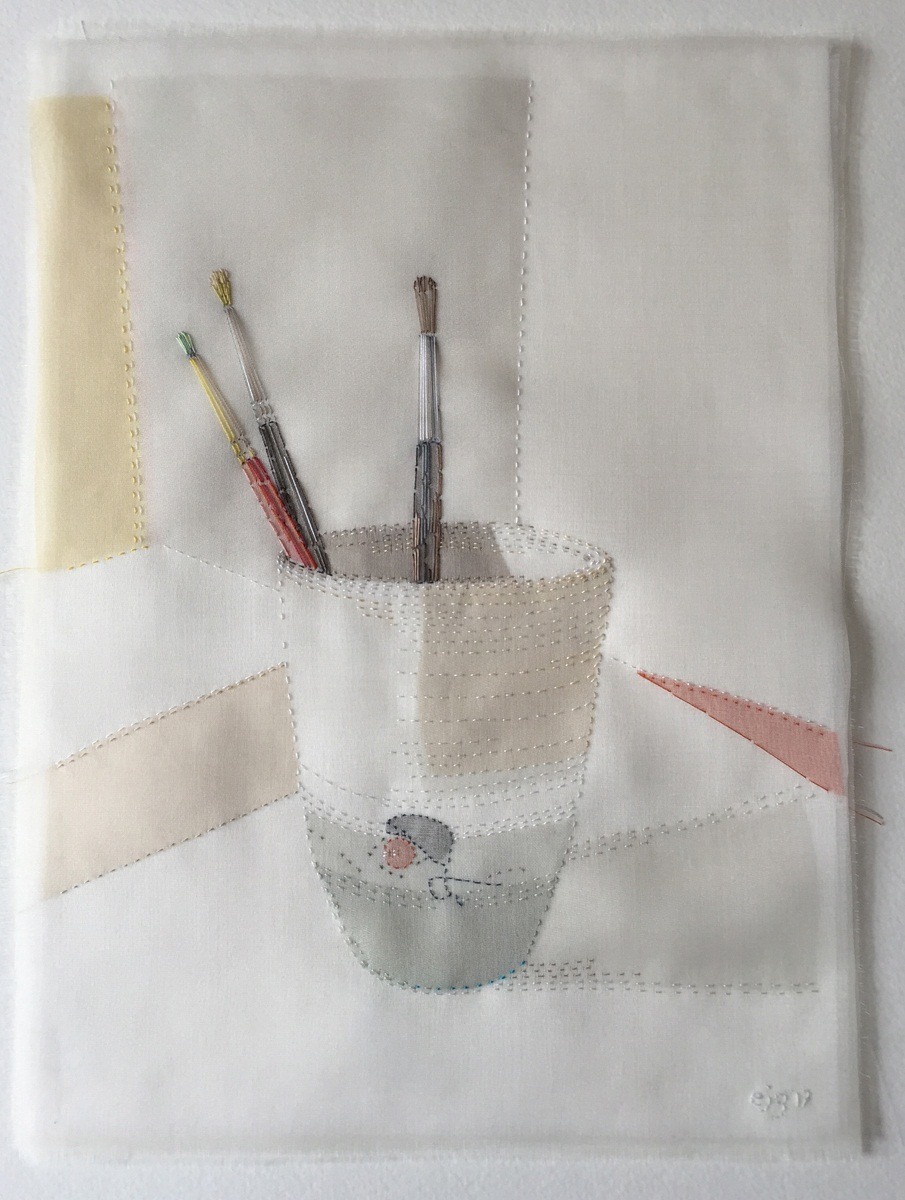
Combining other artists’ work with one’s own
TextileArtist.org: How did the idea for the piece come about? What was your inspiration?
Emily Jo Gibbs: The idea for this “Beaker with Paint Brushes” was the culmination of several things. I’d just finished a collaborative project with Bridget Bailey that resulted in my Pincushion portraits depicting people through their workspace and tools (you can see examples of this work on Emily’s website here).
And I’d also been making still lifes of sticks in jam jars for several years.
So I was looking for my next subject and thought it might be very interesting to depict other makers’ work. I am very fond of my Helen Beard ceramic beaker, as I think it’s so clever the way the swimmers are immersed. So I tried emulating that style through lots of compositions, and I ended up liking the paint brushes best.
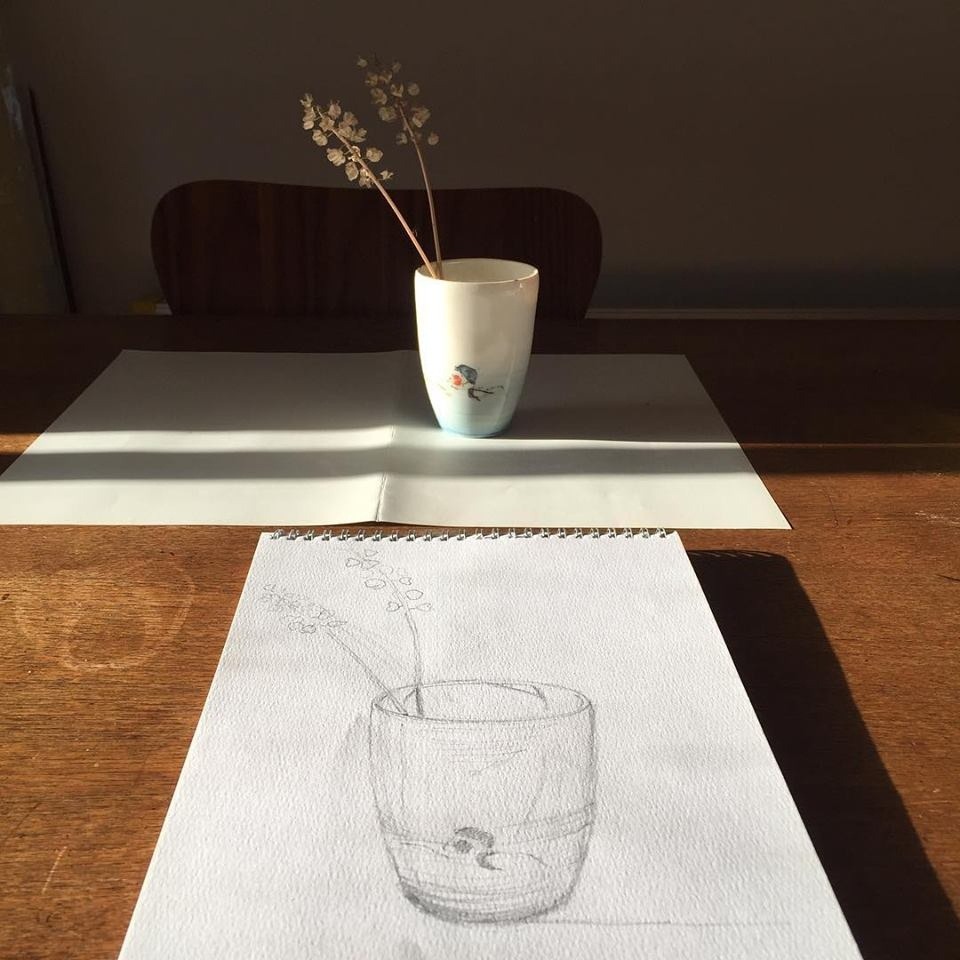
What research did you do before you started to make?
For this piece, I made drawings and took photographs to consider the composition. I also decided to place cardboard panels behind the subject to create areas of light and shade and to bring more colour into the background of the piece.
When considering the composition, I pay most attention to the shape and tone of the different elements. Quite often, my still life’s have a plain white background. But I wanted to bring more colour into this piece, so I arranged pieces of card and sketchbooks around the subject to create areas of light and shade that could be translated into coloured panels.
My intention was always to ignore the lettering on the card, but I really like the tonal changes these pieces give the background.
My desk has a big window to the left, which throws great shadows. Not only on the desk surface but also inside the cup.
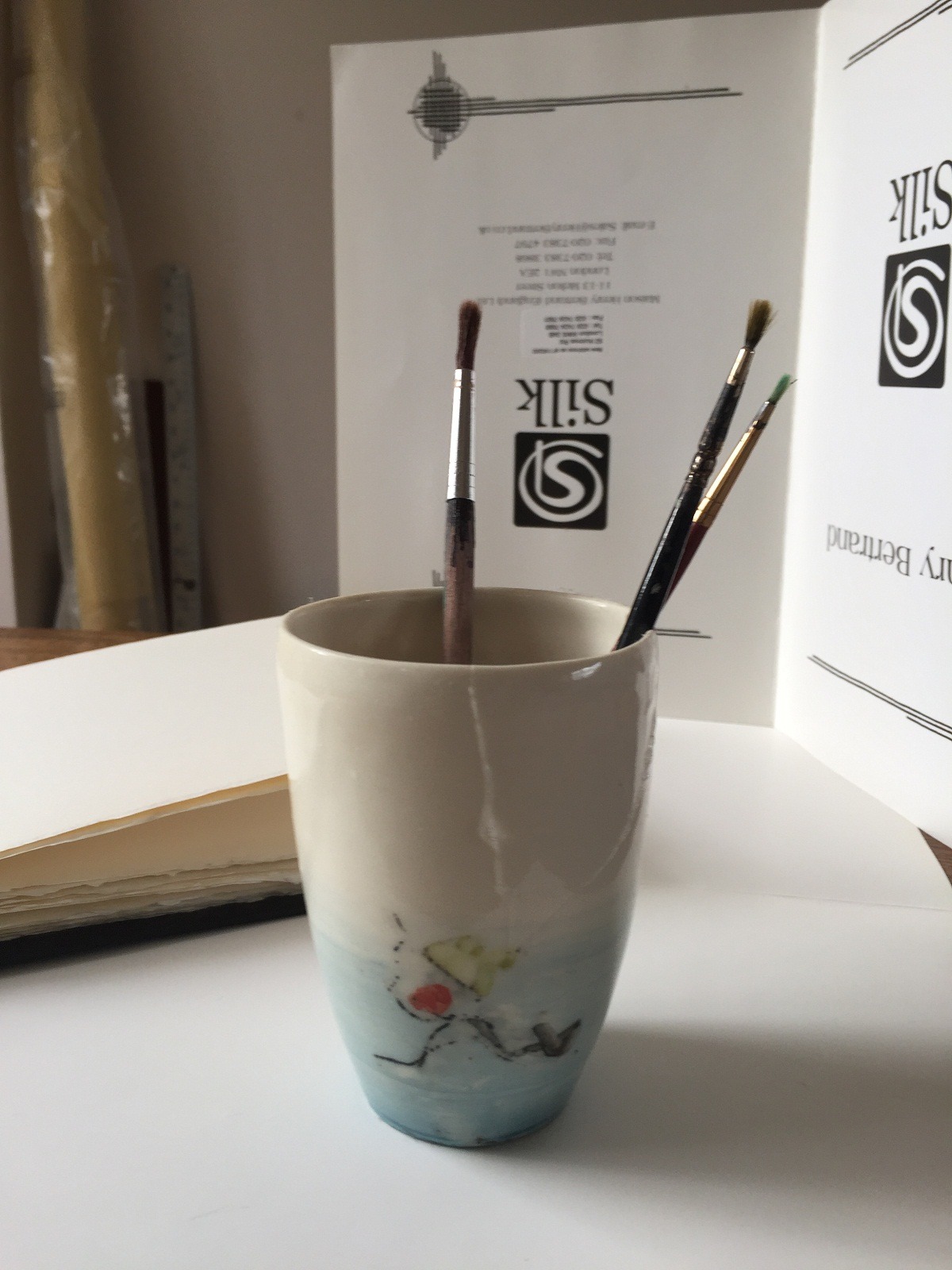
In the above image, the paint brushes on the right sit inside that light area and make a more confusing image. The green brush is also really close to the fold in the card, and the page of the sketchbook lies in line with the rim of the beaker.
I prefer the other two images below where I can see clear panels of colour. Light and shade that can be easily translated into a collage.
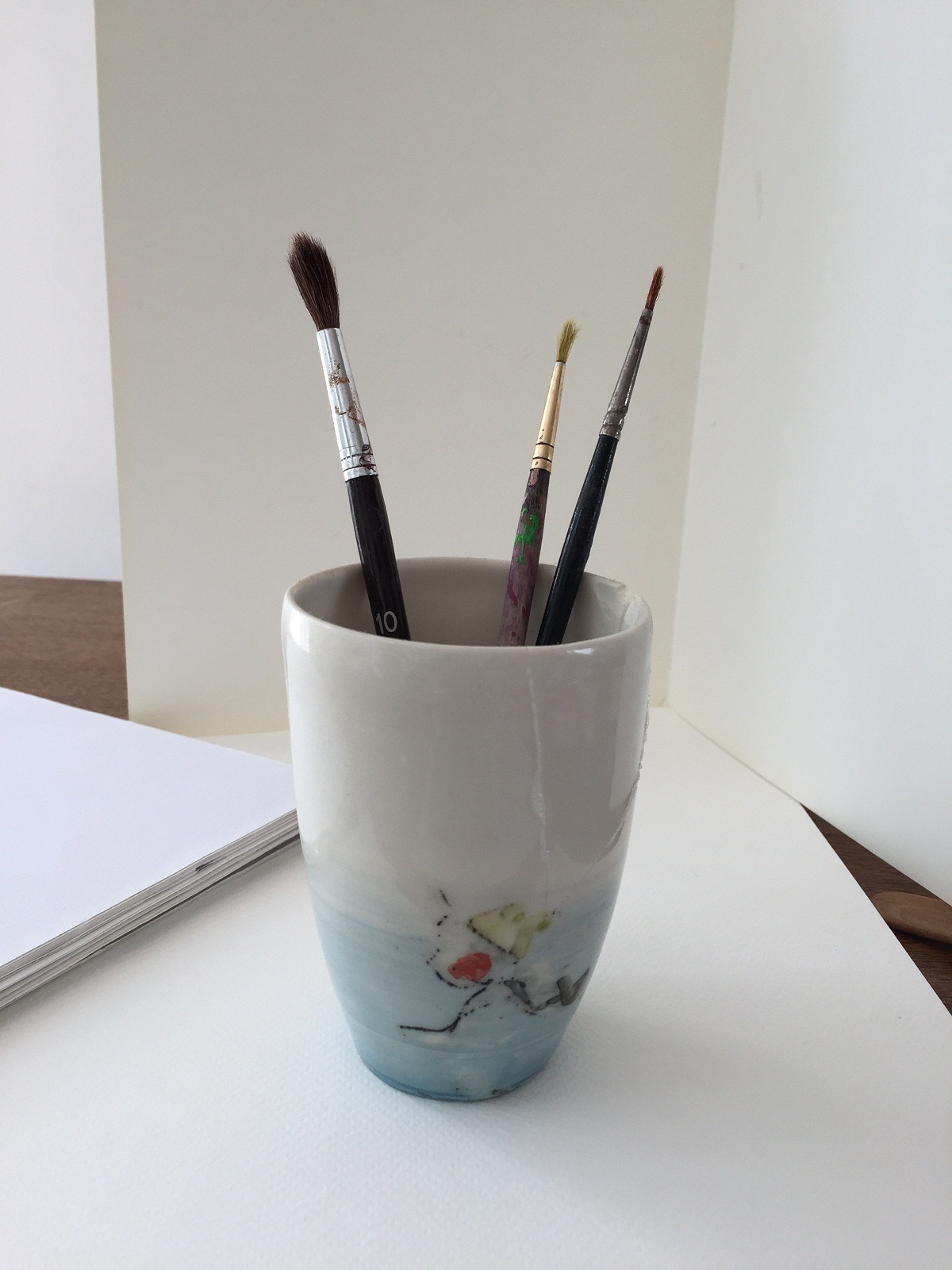
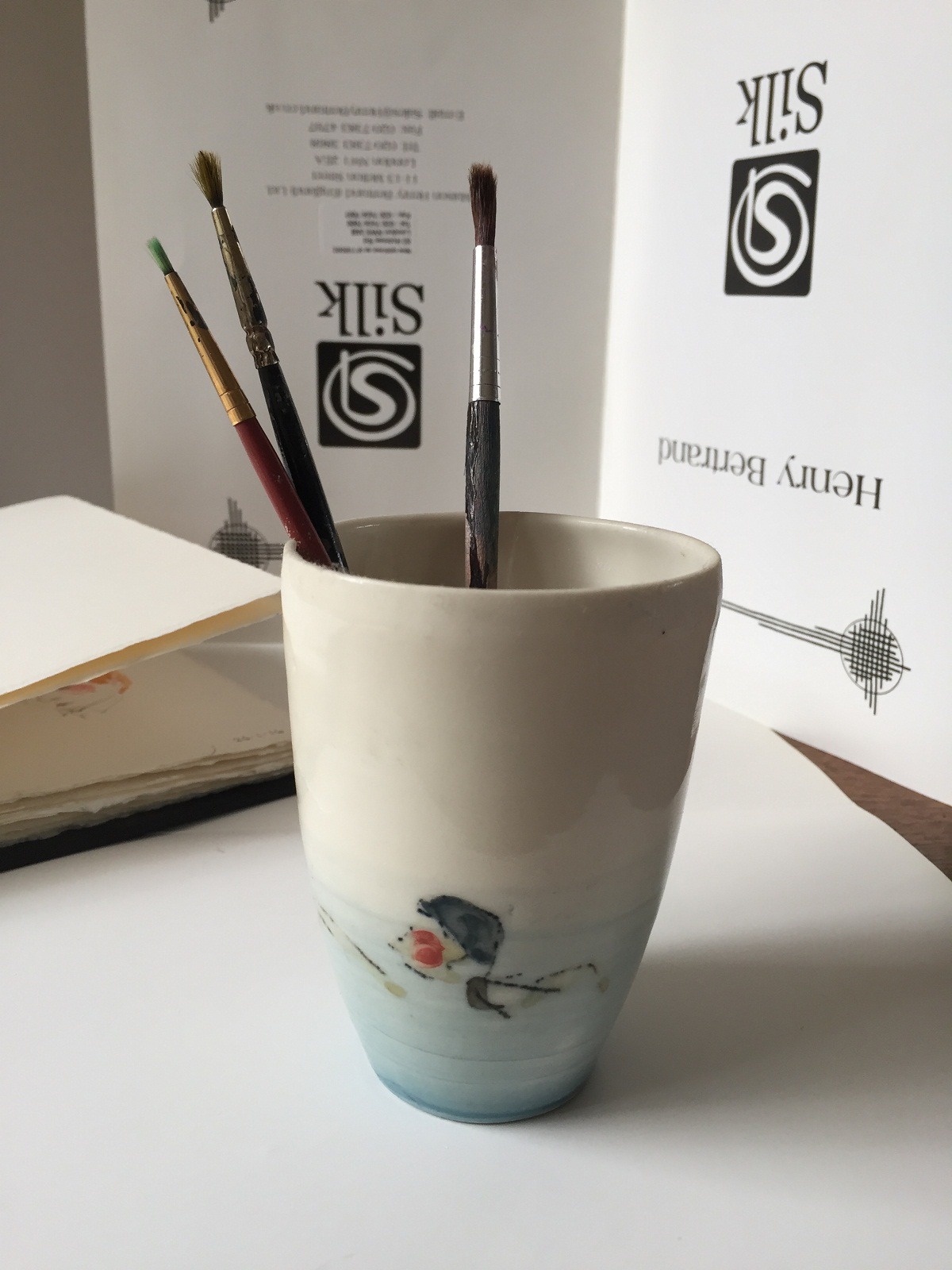
I made a successful piece of the beaker with the swimmer with the blue hat (final image) and wanted to make a similar piece of the other side of the beaker, so I recreated the composition with different bits of card and paper.
There is also a bit of artistic license: in the top image, there is a roll of yellow organza in the background. I used that yellow organza for the swimming hat and echoed it in the left-hand panel even though that area is bright white in the photograph.
I chose these knackered old paint brushes because of the shapes of the actual brushes. The flacked-off paint on the handles, the different metallic bits and the stained bristles all add to their liveliness.
And the beaker is a treasured possession made by Potter Helen Beard. Sadly, it’s been dropped, so it’s no longer functional. But it’s still rather nice to celebrate it.
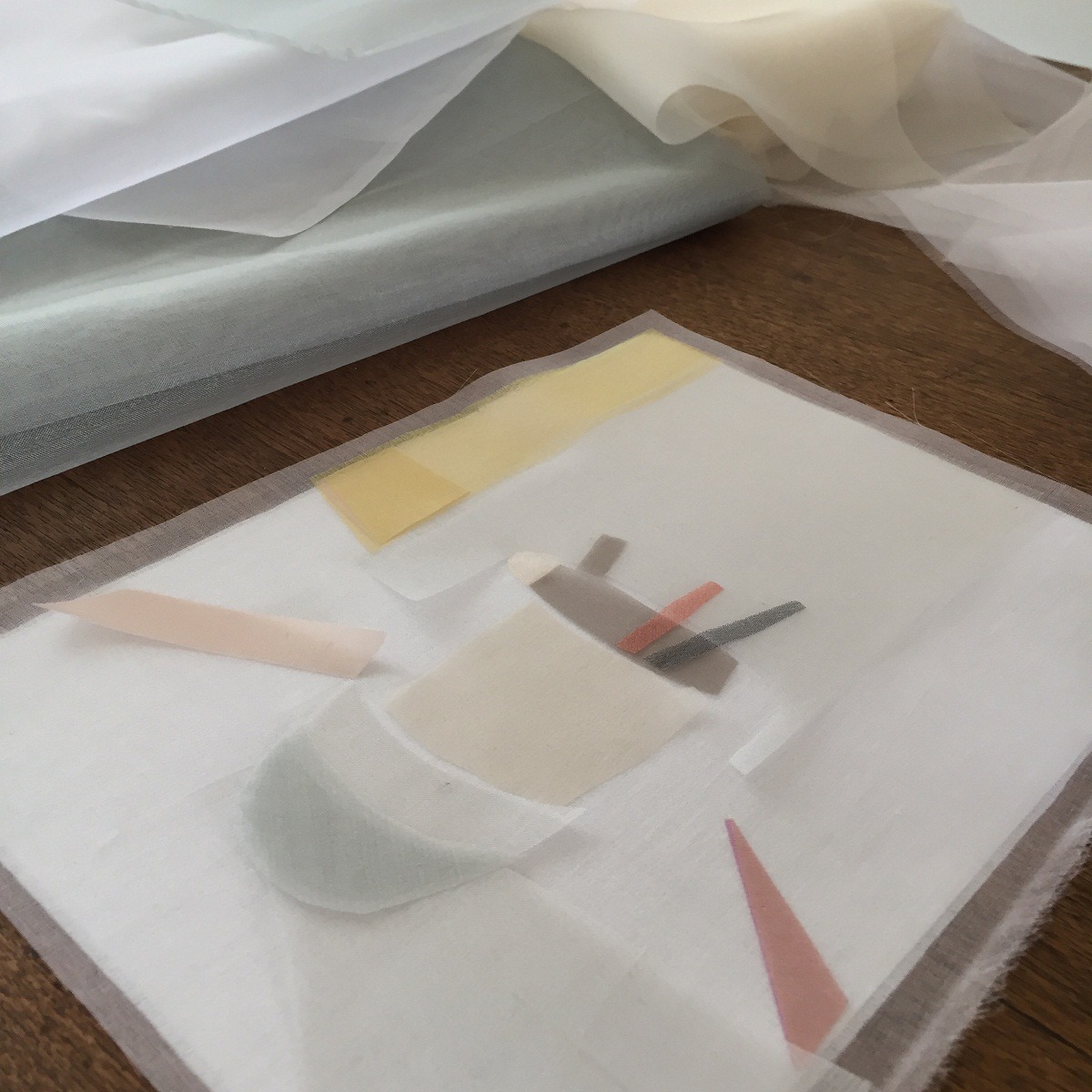
Simple tools lead to intricate results
What materials were used in the creation of the piece? How did you select them? Where did you source them?
My work is made from a collage of silk organza pieces on a background of white linen. My previous career making couture evening bags left me with a lot of silk organza. So I laid the organza pieces on some heavy white cotton I had on hand.
Now, though, I prefer to use linen as the base. The edges fray in a really satisfying way and linen gives the work a nice weight.
I buy two types of linen from Whaleys. The first is Drill Satin Linen White (Optic White) which is a dense, heavy-weight fabric that’s very bright white. The second is Novelle Linen White which is a lighter, slightly off-white, fabric.
I generally buy my silk organza from Henry Bertrand and Macculloch and Wallis. Many of my students buy their organza from shops on Berwick Street, London W1, where they are able to buy smaller lengths in different colours.
I stitch with cotton or poly-cotton threads made by Coats, Gutermann, and Sylko. I like these threads because they are fine, readily available, and offer great colour ranges. I also tend to grab what I have that is the right colour and weight.
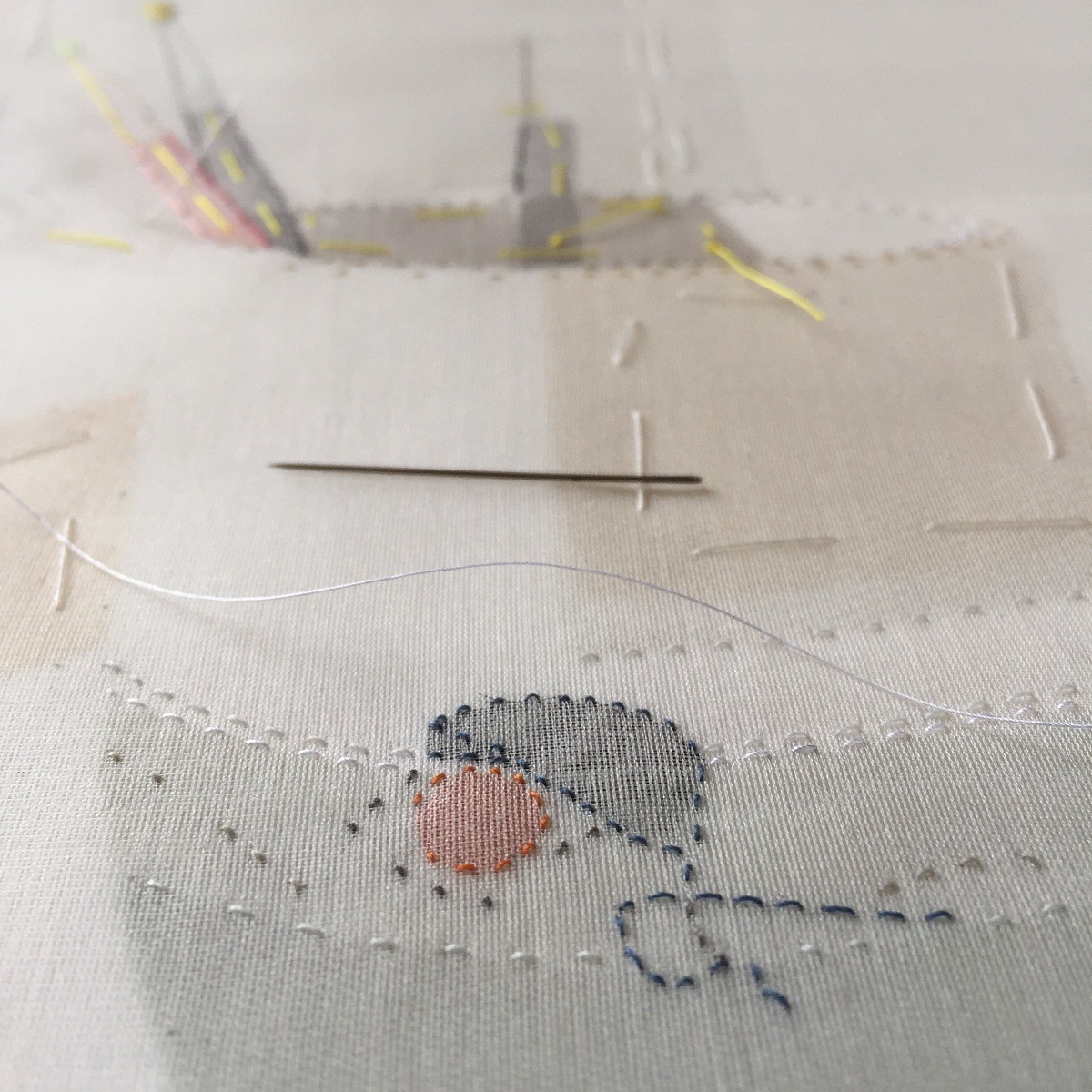
What equipment did you use in the creation of the piece and how was it used?
I actually use very little equipment.
I use Fiskars scissors in large and small sizes. I pin my organza to paper templates and then cut through both the organza and paper at the same time to get a very accurate cut. But because I cut through both, I use scissor sharpeners which I highly recommend. I use the Fiskars model of sharpener
I also use a magnifying visor like those used in the jewellery trade. Mine was a hand-me-down, but I believe you can buy them from Cookson’s.
I use sharps or embroidery needles in Size 8 or 9. But I don’t use a frame. Instead, I work off the edge of my dining room table.
And finally, an HB pencil helps me draw stitch marks on my layered fabric.
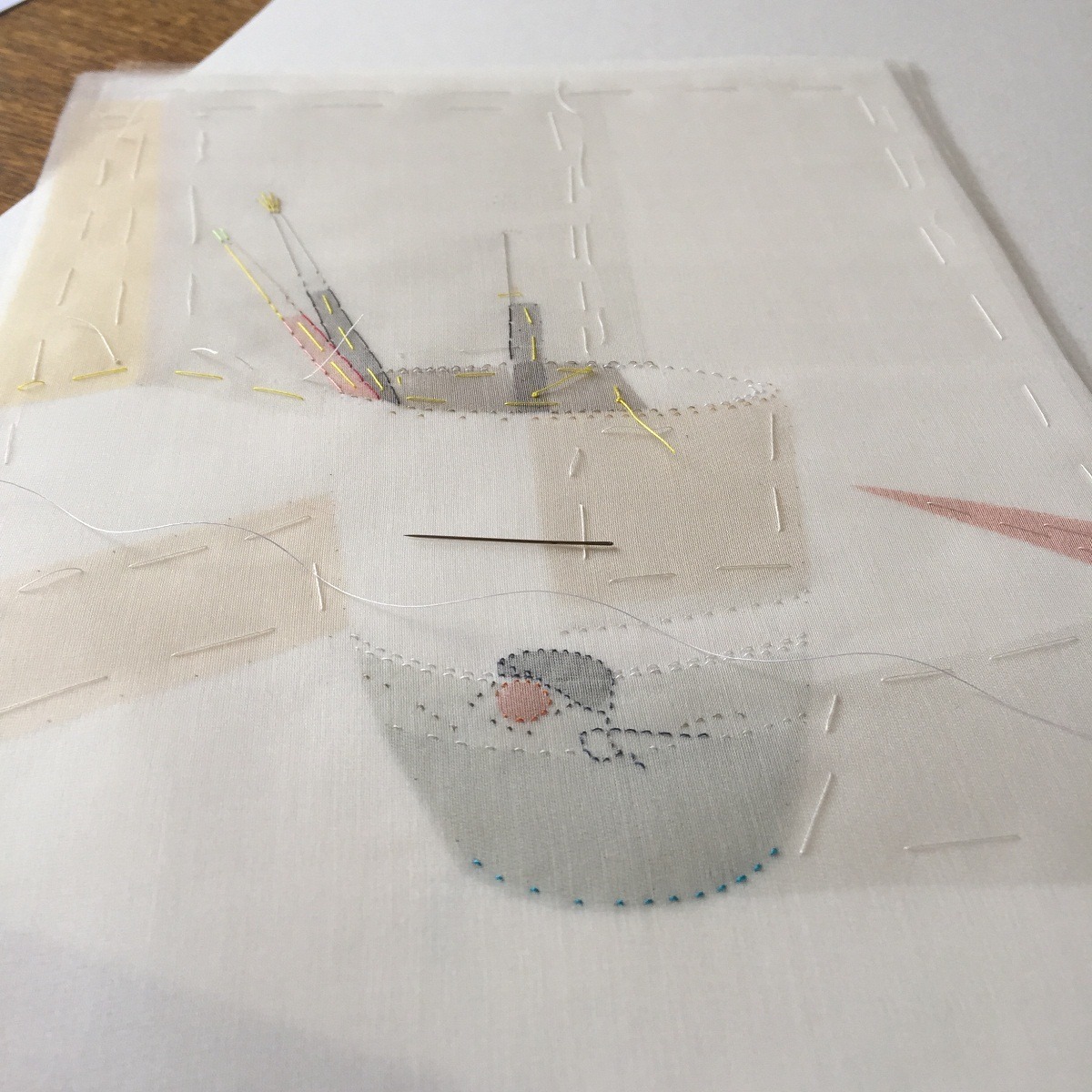
Working with delicate fabrics IS possible
Take us through the creation of the piece stage by stage
My Helen Beard beaker is decorated with two swimmers. One has a yellow hat, and the other has a blue hat. This gave me the opportunity to make a pair of similar still lifes with one on each side.
I take a lot of care designing the composition using drawings, photography and photocopying to make a to-scale template for the finished piece. I make several photocopies of the finished design, which I then use as templates for cutting the organza.
I next cut a piece of linen and a piece of white organza to the size of the template (in this case about an A4 size). I fray the edges of both pieces of fabric.
Then I lay the prepared piece of white organza over the template and pin together. I make small dots with my sharp HB pencil. Every dot represents a stitch. I need enough dots so I know where to position my pieces. But I want the work to remain light and airy, so some areas will have lots of dots and other areas will have very few.
I then set this piece to one side.
Meanwhile, I look carefully at the design to identify which areas will be which colour, as well as what will be fabric-and-stitch and what will be just stitch. Some areas will be made from two or three layers of the same colour.
You can see the bottom of the beaker and the shadow are one piece of pale grey on top of which are laid two smaller pieces of pale blue. This creates the gradient effect of the glaze.
Notice the inside of the beaker and the brush handle on the left are the same shade, and I laid a double-layer of yellow to create more punch in that area.
To accurately cut out these shapes, I lay the coloured piece of organza over the photocopy template, pin it, and cut out the shape through both the paper and organza. I needed multiple photocopies because some shapes overlapped.
Once all the pieces are cut, they need to be positioned under the white organza piece prepared earlier. I use the dots to help me see where each piece goes and then pin and tack to get everything in place.
When all the pieces are tacked onto the white organza, I lay the whole lot onto the linen and tack around the edge and across the piece to hold everything in place.
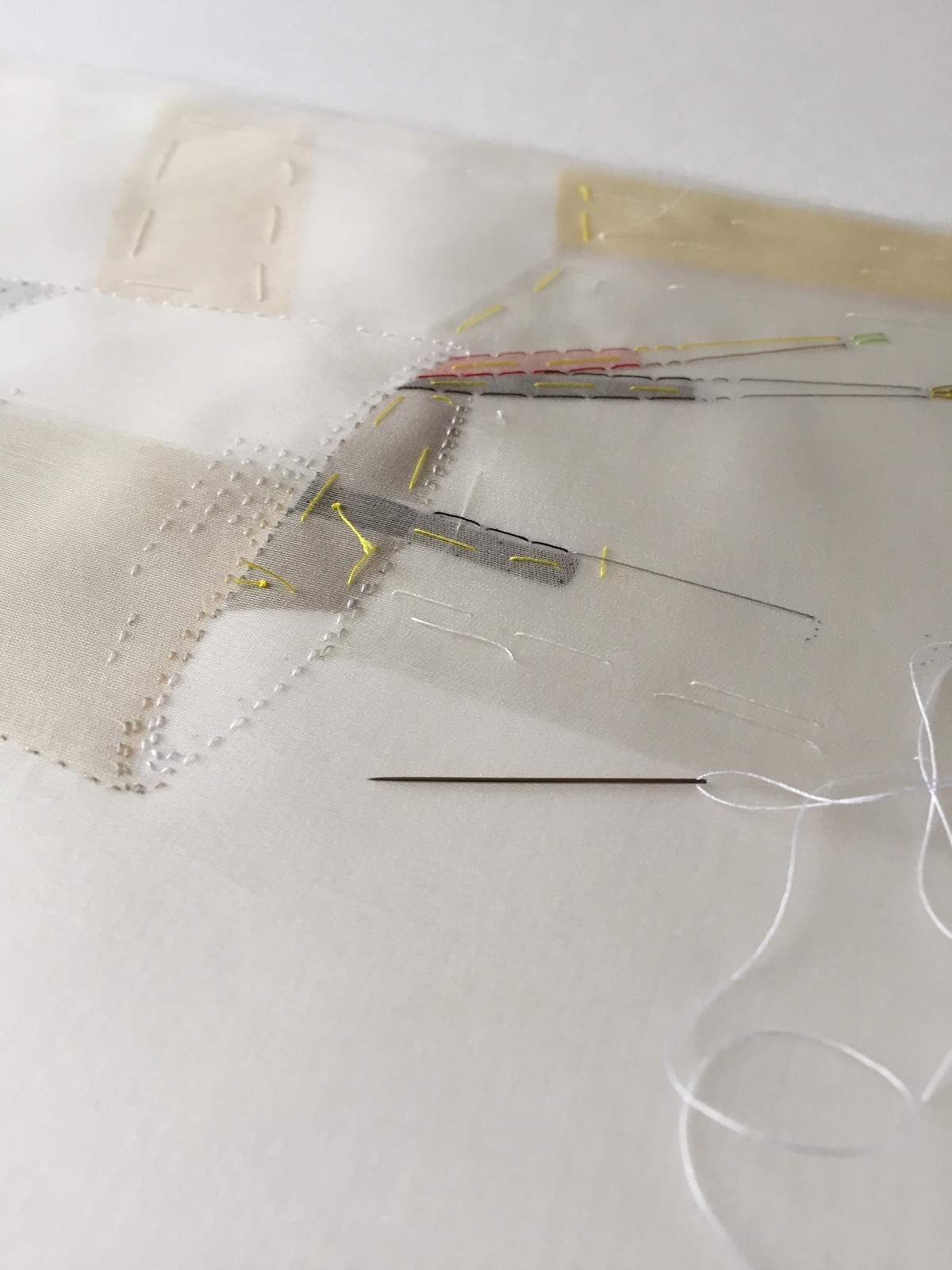
When I’m making the work, there are two distinct disciplines in action: creating the collage of organza pieces and then hand-stitching all the details.
Observing the template and the actual object, I use short and long stab-stitches to describe what I see. I move across the whole piece stitching over the dots and alongside the colour pieces to trap them in place. I change my colour often, sometimes just making one or two stitches in a particular colour.
Hopefully, you can see how I have prepared to stitch the metal part of the paint brushes with just long stitches. I made simple pencil marks at the top of the wooden part of the brush and the top of the metal part. And I used several longs stitches of white thread next to one another to describe the highlight.
When I have stitched around or over a piece and it is anchored, I remove the tacking. This allows the picture to gradually build until it is completed.
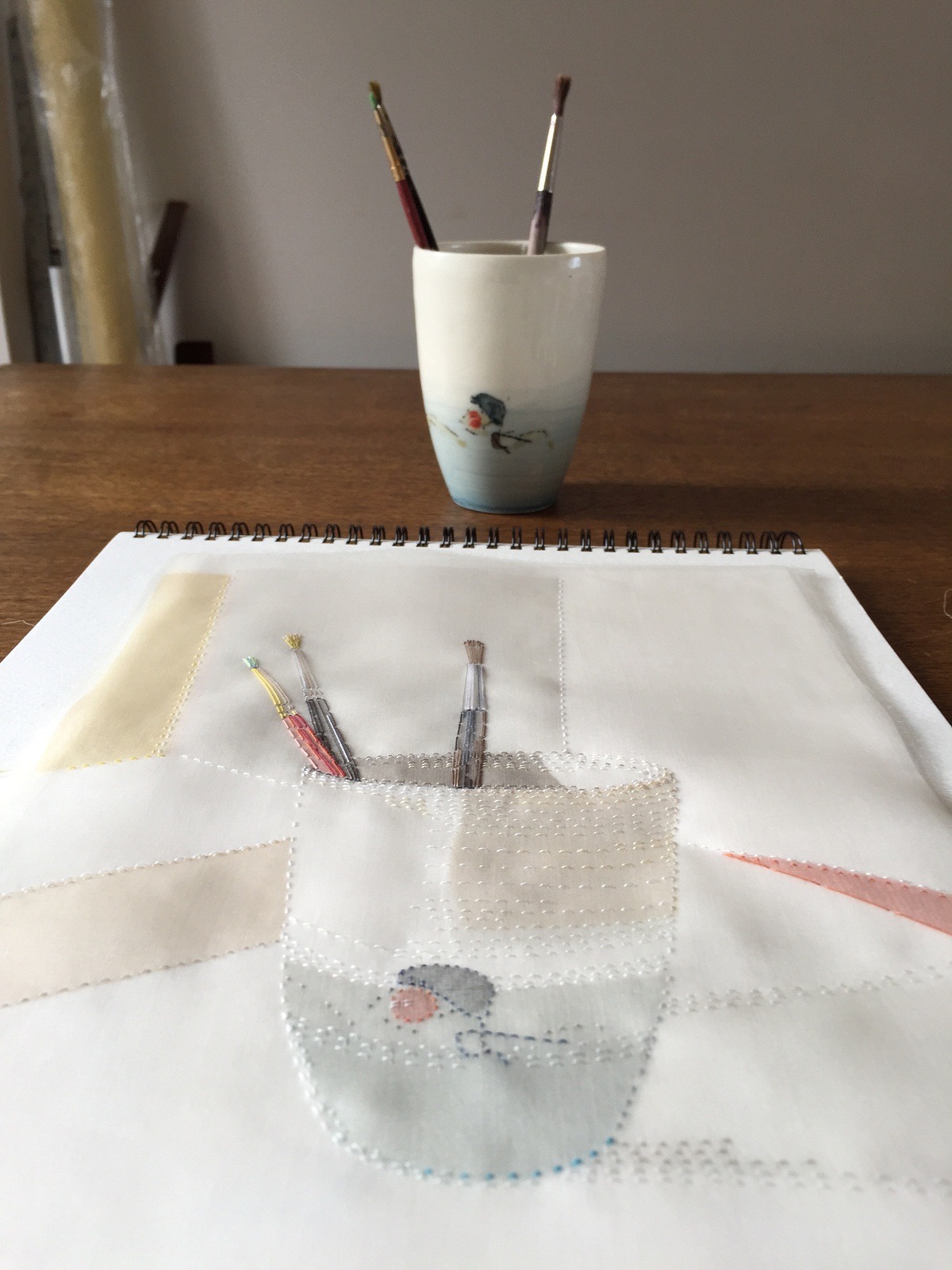
What journey has the piece been on since its creation?
I originally made this piece for Mint’s spring show in 2017. All these pieces sold, so I made “The Other Side,” which at the time of writing this, is available to buy on my website.
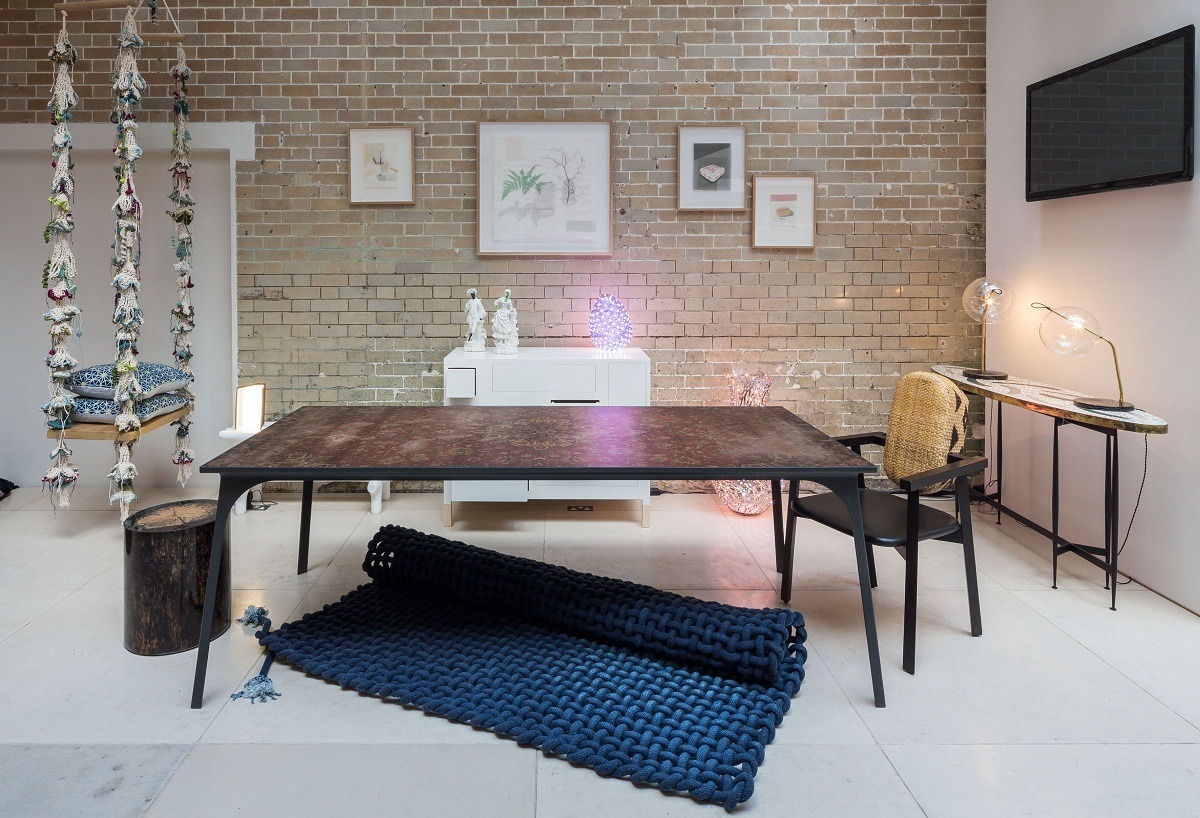
For more information visit www.emilyjogibbs.co.uk
Let us know about your own experiences working with sheer delicate fabrics. What challenges have you faced? How did you meet those challenges? What might you do differently having learned Emily’s tips? Please share by leaving a comment below.
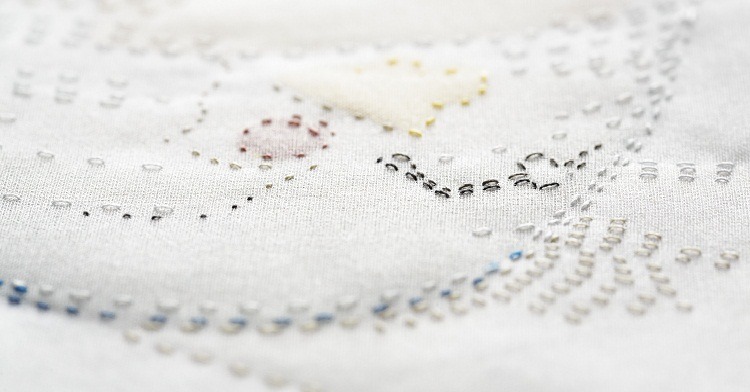
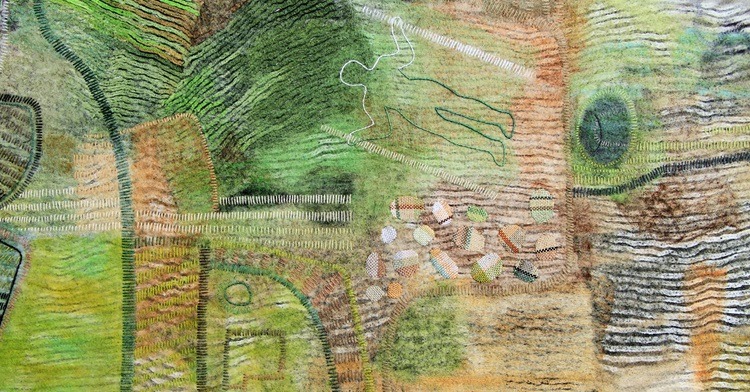
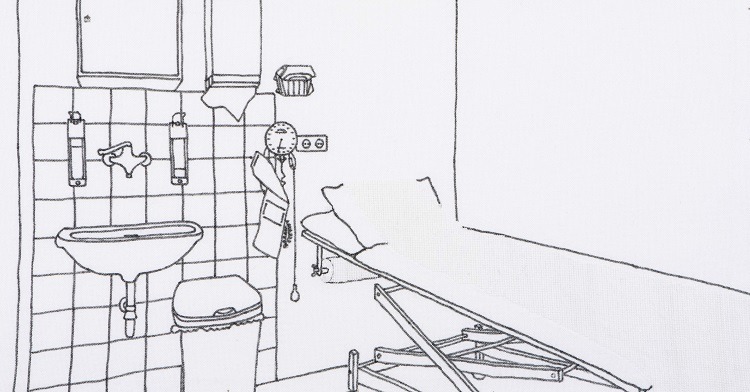
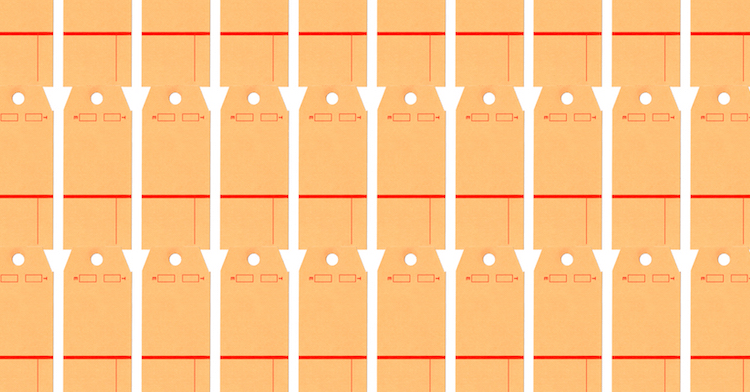
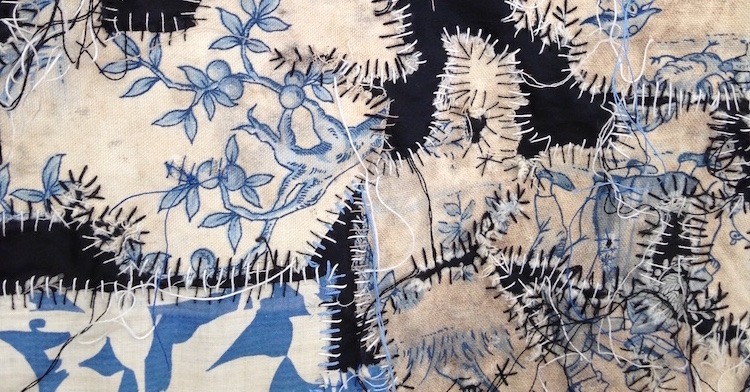
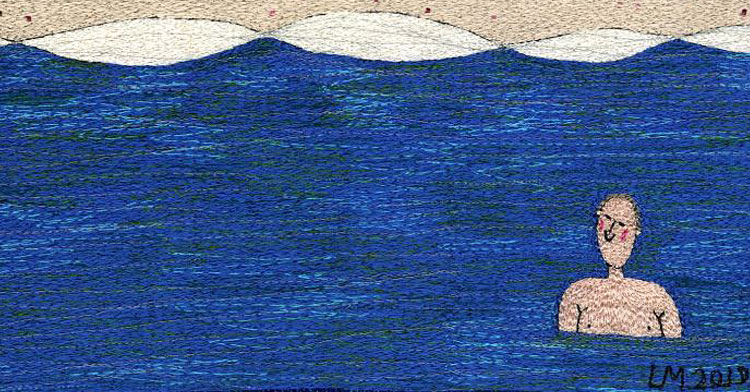
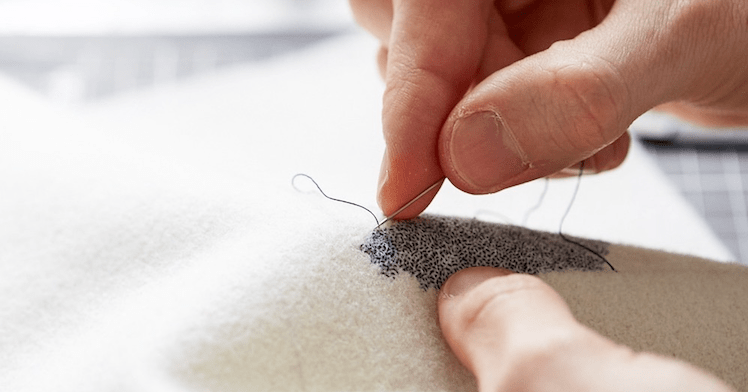
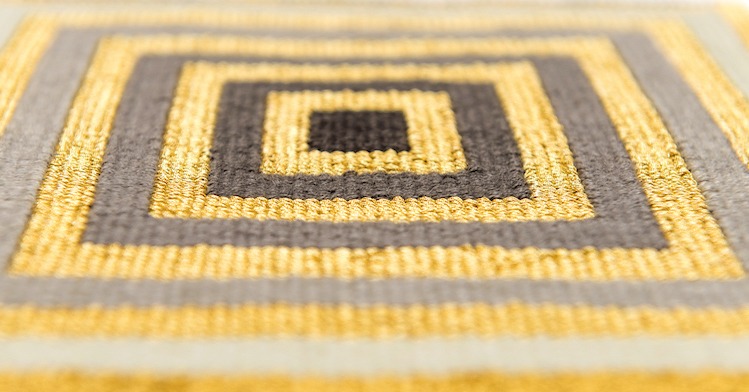
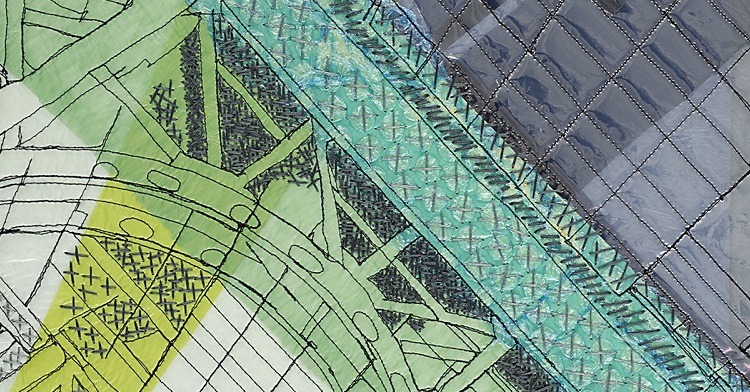
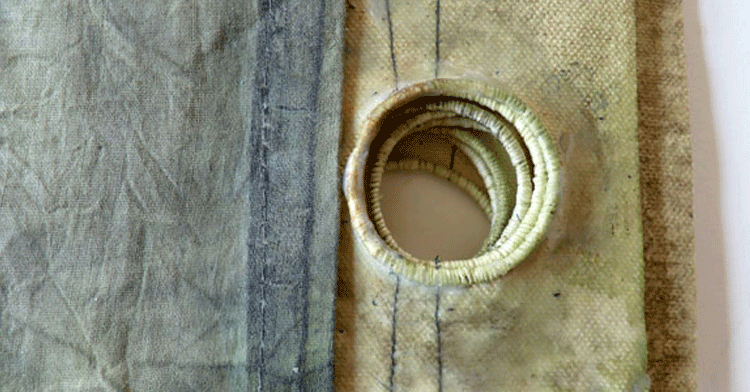
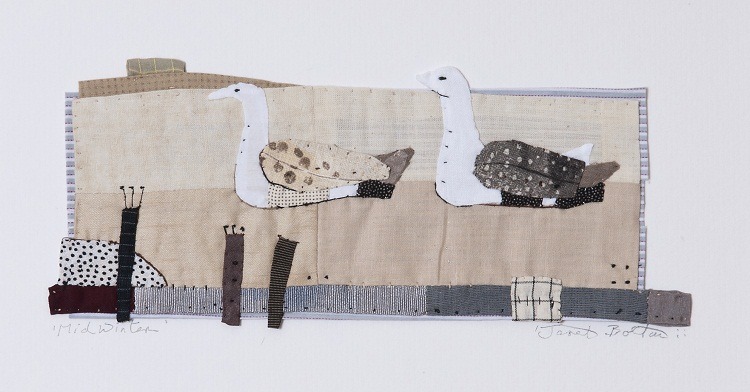
4 comments
Judith thorne
I just found your website. Scratch my questions…thanks.
Judith thorne
Do you have a teaching video, online class or book? I absolutely love your work and am fascinated by your techniques. I’d would really appreciate knowing how many colors and which colors of organza would you recommend to buy when first starting? What is the fiber content of the organza? Caroline, thank you so very very much for sharing this with me. What an inspirational article.
Susan Bowhay-Pringle
Deceptive simplicity! I love the working of the paint brushes in this piece and the geometry of the background shapes. I work in silk and muslin, layering fabrics and the comment from Jackie T about pinning is true – all those pins just get in the way. A little loose tacking and patience serve better but the essential element is understanding the fabric.
Jackie T
I love the evanescence of layered sheer fabrics. Because of their tendency to misbehave I think I’ve been too heavy handed in pinning them down before they make a run for it, leading to more stitching than I need. Looking at Emily Jo Gibbs ‘Beaker with paint brushes’ I was charmed by the delicacy and restrained use of stitches. They say just enough, and let the qualities of the fabrics sing their own song. I resolve to have a different relationship with the materials I use in future.